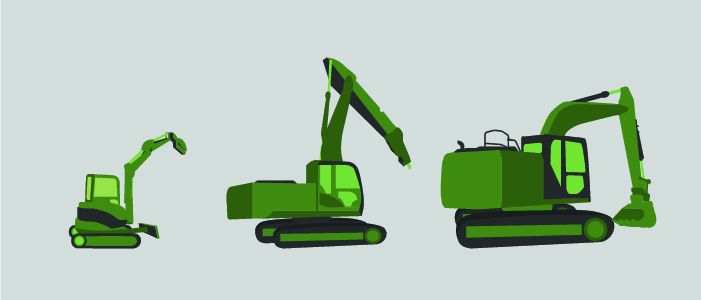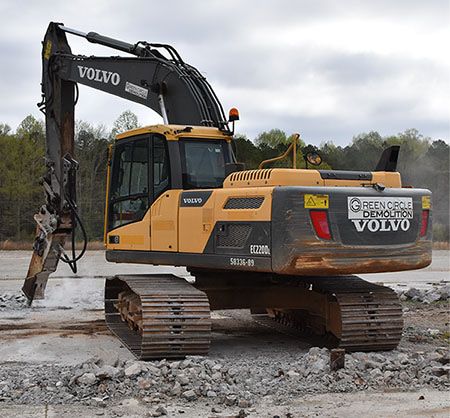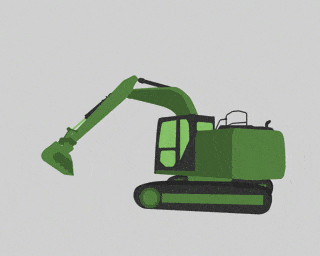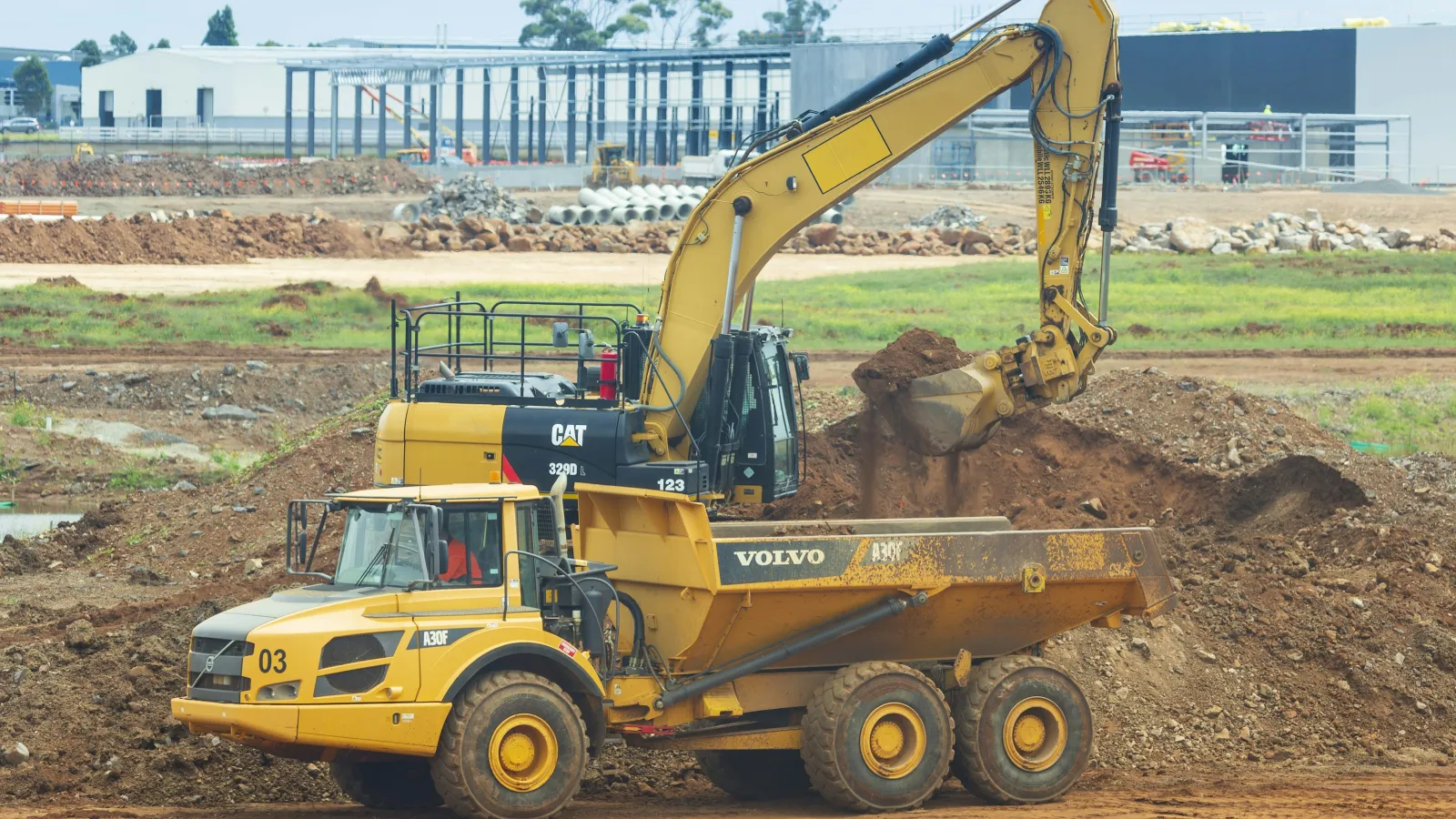
When it comes to getting a complete demolition project done right, there is only one machine for the job, the excavator. The excavator is the workhorse of most medium to large-scale demolition projects.
Excavators are the preferred tool when it comes to the removal of structures, slabs, concrete footers, and debris. Despite the countless models, the separating factor is the excavator's weight, load capacity, max reach, and compatible attachments. Out of the dozens of the machines, three classes are relevant when performing demolition.
These classes are the mini-excavators, 200 series, and 300 series. To help you identify which is best for your project, we will be sharing the advantages and disadvantages of each in this blog.
Mini-Excavators
These small but mighty machines are the go-to when on a project that has size restrictions. For transportation, these machines only need a standard or gooseneck trailer. This only adds to their tool-belt of versatility.

PROS
Due to their low profile, they are useful in warehouses and other spaces with low rooflines. The excavator's low weight and short stature make it irreplaceable when working in tight quarters or on slabs with weight limits. Though this is the smallest class of excavators, they use the same attachments as the larger excavator classes. These attachments include a hammer-breaker, shear, and bucket. However, these attachments are not identical to those found on the larger excavators. They are all much smaller and have lower work capacity, but they still have their place on a job site.
CONS
Mini-excavators are not without their flaws. Excavators in this class are not meant to perform any heavy-duty tasks. This includes structural demolition or moving large quantities of debris. To negate this drawback, along with mini-excavators most projects have a skid-steer on-site to aid in debris removal and material sorting.
200-Series Excavator
The 200-series is the most common excavator class used on demolition wrecking projects. These 20+ ton machines have larger buckets (30-42" cu.yrd.), wider stance, higher lifting capacity and reach.

PROS
Due to its 30 foot-plus reach, this excavator class is excellent at demolishing of all structures. The excavator uses larger attachments to help expedite the entire demolition process. This includes bringing a building to the ground, debris sorting, and load-out for disposal. High performance of each of these steps makes this machine self-sufficient and independent. This independence means you can perform a demolition project with only this excavator. Though this class of excavators is mighty capable, they are not ideal when the project includes a turnkey scope of work and are difficult to transport.
CONS
Transportation of these larger machines is more complicated than a mini-excavator. For transit this series needs a semi-truck with a lowboy trailer. When using a lowboy trailer, the route that the truck takes is of great importance. The road is important because not all streets and traffic patterns support the turn radius for the semi-truck to arrive at the job site. Also, the 200-series machines struggle whenever asked to perform the more burdensome duties on a job site. These tasks include pulling and breaking (6" +) slab, removing building footers, and moving heavy material. Scope of work such as this demands an excavator of the 300-series being onsite.
300 Excavators
The next series in excavators our competitors and we use is the 300-series excavator. We deploy this excavator when we encounter a project that has a turnkey scope.

PROS
These machines are capable of accomplishing every task that the 200 series can and then some. This excavator is ideal for digging up building footers, hammering pesky concrete slabs, and processing materials. This machine can complete these tasks because of their 12.5+ ton lifting capacity, 200+ horsepower, 54 cu yd bucket, and operating weight of over 60,000 lbs. Transportation of these massive machines is identical to that of the 200-series excavators. Once loaded on the lowboy trailer, the semi-truck takes a planned route to the job site. Despite all of the advantages, these massive excavators do have some significant disadvantages.
CONS
The weakness of this excavator class is precisely what makes it so valuable, its size. That's right, the drawback from using the 300-series excavator is its 12.5+ ton lifting capacity, 200+ horsepower, 54 cu. Yd. bucket, and operating weight of over 60,000 lbs.
All of that muscle is not vital on every project, and it certainly cannot fit on every job site. Most demolition projects are defined by the limited space available to the contractor and how that company will adapt and then complete the scope of work quickly and safely. The other way that size is this machines biggest enemy is its price tag. To rent one of these excavators, you will pay around 35% more than you would if you were to rent a 200-series excavator.
None of these machines are perfect, they each have flaws, and they each have their strengths. What is important to remember is that it is not the biggest machine that will do the best job, but instead it is the machine that fits the situation best.
Hopefully, we have helped you decipher the complicated world of excavators. We hope you feel confident in choosing the best machine for your project!




